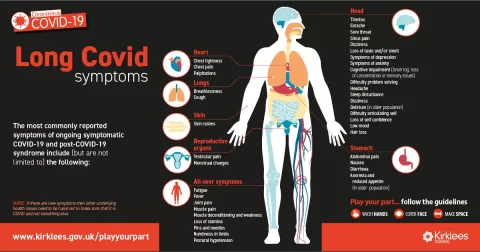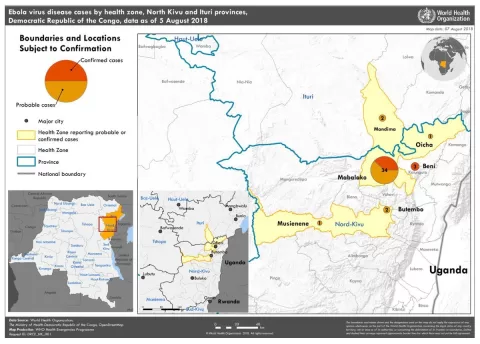Medical oxygen systems are critical to ensuring that millions of individuals receive the life-saving oxygen they need, particularly in times of acute illness and surgery. Despite the essential role that these systems play, access to medical oxygen remains alarmingly inadequate, with over 5 billion people lacking reliable oxygen supply worldwide. This deficiency not only hampers effective healthcare delivery but also highlights significant health equity gaps that must be addressed to enhance global health outcomes. As the world continues to grapple with the repercussions of the COVID-19 pandemic, the focus on pandemic preparedness has never been more crucial. Investment in robust medical oxygen systems is essential for preventing future oxygen supply shortages while aligning with the recommendations from global health agencies aimed at achieving the Sustainable Development Goals.
Oxygen delivery systems, often referred to as medical oxygen solutions, play a vital role in healthcare by providing essential support for patients suffering from various respiratory ailments and conditions. The ongoing challenges surrounding oxygen accessibility highlight the urgent need for enhanced infrastructure and policies that ensure equitable distribution of these critical resources. As global health entities mobilize to address health disparities, the significance of oxygen supply cannot be overlooked, especially when considering the impact of recent public health crises. Solutions for improving oxygen access are intertwined with broader themes of health equity and pandemic readiness, underscoring the need for comprehensive strategies that adapt to local contexts. By investing in these oxygen delivery mechanisms, nations can better prepare for future health emergencies while promoting overall well-being.
The Importance of Medical Oxygen Systems in Global Health
Medical oxygen systems are critical in ensuring that healthcare facilities can adequately support patients suffering from a variety of acute and chronic conditions. With over 5 billion people lacking access to safe and affordable medical oxygen, the need for robust oxygen delivery systems is more pressing than ever. The Lancet Global Health report highlights that approximately 400 million individuals globally require medical oxygen annually, underscoring the scale of the unmet need. By investing in medical oxygen systems, countries can not only save lives but also enhance their overall healthcare delivery frameworks.
Incorporating medical oxygen into healthcare systems is pivotal for pandemic preparedness. The COVID-19 crisis revealed significant gaps in oxygen supply chains, prompting the need for systematic evaluations and improvements. Global health agencies must prioritize the development and implementation of national oxygen plans tailored to local contexts, ensuring that oxygen systems are sustainable and accessible. By addressing these gaps, we can prevent future crises and provide equitable health solutions for underserved populations.
Addressing Oxygen Supply Shortages: A Call to Action
Oxygen supply shortages have become a pressing issue, particularly highlighted during the COVID-19 pandemic. The Lancet report emphasizes that past efforts focused primarily on increasing oxygen production, neglecting the essential systems needed for effective distribution and usage. To combat these shortages, governments and global health organizations must integrate long-term planning and operational strategies into their oxygen delivery frameworks. This includes ensuring that healthcare facilities are equipped with the necessary technology and support systems to manage oxygen supplies effectively.
Moreover, addressing oxygen supply shortages requires collaboration between public and private sectors. By fostering partnerships, stakeholders can enhance the efficiency of oxygen distribution networks while also focusing on affordability and accessibility. Such collaborations can lead to the establishment of governance structures that support initiatives like the Global Oxygen Alliance (GO₂AL). By creating comprehensive action plans that include funding, training, and resource allocation, countries can work towards resolving oxygen access challenges and improving health equity.
Impact of Health Equity on Access to Medical Oxygen
Health equity is intrinsic to ensuring that all individuals have access to essential medical services, including oxygen therapy. The report from The Lancet highlights that social injustices often exacerbate health disparities, particularly in low- and middle-income countries. In these regions, inadequate healthcare infrastructure and resources frequently result in limited access to medical oxygen, affecting vulnerable populations the most. Addressing these disparities is crucial for improving health outcomes and ensuring equitable access to medical oxygen.
To promote health equity, it is essential to tackle the root causes of systemic inequalities that hinder access to medical oxygen. This involves not only improving healthcare infrastructure but also integrating social determinants of health into public health strategies. Global health agencies play a vital role in advocating for policies that prioritize health equity, ensuring that investments in medical oxygen systems reach those who need them the most. By fostering inclusive healthcare practices, we can work towards a future where access to essential medical resources is a fundamental right for all.
The Financial Implications of Closing the Oxygen Gap
Investing in medical oxygen systems represents a significant financial commitment, with estimates suggesting a need for $34 billion over the next five years to close the oxygen gap in low-income countries. While this may seem daunting, the long-term benefits of such investments are substantial. Improved access to medical oxygen can lead to reduced morbidity and mortality rates, ultimately saving healthcare systems money over time. Additionally, the economic burden associated with untreated respiratory conditions can be alleviated through proactive oxygen supply initiatives.
Governments must recognize that investing in health infrastructure, particularly medical oxygen systems, is a cost-effective strategy for enhancing health outcomes and achieving the Sustainable Development Goals. By prioritizing oxygen services within national health budgets, countries can ensure that they are prepared for future health challenges, including pandemics. Furthermore, collaboration with international donors and health organizations can facilitate access to additional funding, making the goal of equitable oxygen access more achievable.
The Role of Global Health Agencies in Oxygen Access
Global health agencies are crucial in spearheading initiatives aimed at improving access to medical oxygen worldwide. They provide the necessary frameworks and resources to help countries develop and implement effective oxygen delivery systems. By conducting research and disseminating best practices, these agencies can guide governments in establishing national oxygen plans that are responsive to local needs. Furthermore, global health agencies can facilitate partnerships between various stakeholders to ensure a cohesive approach to addressing oxygen access.
In addition to providing technical support, global health agencies can advocate for policies that prioritize oxygen access as a fundamental health service. By emphasizing the importance of medical oxygen in achieving health equity and pandemic preparedness, these organizations can mobilize political will and resources. Regular assessments of the oxygen industry’s progress will also help maintain accountability and transparency, ensuring that efforts to improve oxygen access translate into tangible outcomes for populations in need.
Systematic Approaches to Oxygen System Design
Designing effective medical oxygen systems requires a systematic approach that considers multiple factors, including production, distribution, and clinical use. The Lancet report stresses that there is no one-size-fits-all solution; instead, oxygen systems should be tailored to fit the specific contexts of each country. This involves evaluating local healthcare needs, infrastructure capabilities, and financial constraints to create a comprehensive oxygen delivery framework that is both effective and sustainable.
Moreover, operational costs must be integrated into the design of oxygen systems to ensure long-term viability. By planning for maintenance, training, and resource allocation, healthcare facilities can better manage their oxygen supply and delivery processes. This holistic approach not only enhances the efficiency of oxygen systems but also promotes better health outcomes by ensuring that patients have reliable access to the oxygen they need.
The Need for Regular Evaluation of Oxygen Industry Progress
To ensure the effectiveness and sustainability of medical oxygen systems, regular evaluation is essential. The Lancet report advocates for the establishment of metrics and indicators that can assess the performance of oxygen delivery systems. These evaluations can help identify gaps in service delivery and inform necessary adjustments to improve access and efficiency. By implementing a continuous feedback loop, stakeholders can work collaboratively to enhance oxygen access across various healthcare settings.
Furthermore, such evaluations can strengthen accountability among governments and health organizations. By setting specific targets for oxygen access and reporting on progress, stakeholders can demonstrate their commitment to improving health outcomes. This transparency is vital for fostering trust and collaboration among public and private partners, ultimately leading to more effective and equitable oxygen delivery systems.
Future Challenges and Opportunities for Oxygen Access
As the demand for medical oxygen continues to grow due to factors such as climate change and aging populations, addressing access challenges becomes more critical. The report highlights that poor nutrition and increasing rates of chronic respiratory conditions are likely to exacerbate the need for oxygen therapy. Therefore, it is imperative for governments and health organizations to anticipate these challenges and develop proactive strategies to ensure that oxygen supply systems can meet future demands.
Opportunities also exist for innovation and improvement in oxygen delivery systems. Advances in technology and data analytics can enable more efficient production and distribution of medical oxygen. By embracing these innovations, stakeholders can enhance the resilience of oxygen systems and better prepare for potential future health crises. Collaborative efforts between governments, industry, and global health agencies can drive progress towards achieving universal access to medical oxygen, ultimately contributing to improved health outcomes worldwide.
Building a Sustainable Future for Medical Oxygen Access
Creating a sustainable future for medical oxygen access requires a collective effort from all stakeholders involved in healthcare. Governments, global health agencies, and the private sector must work hand-in-hand to develop strategies that prioritize oxygen access as a fundamental health service. By fostering collaboration and sharing resources, countries can build resilient healthcare systems that are equipped to handle both everyday needs and emergencies.
Moreover, investing in education and training for healthcare providers is essential to ensure the safe and effective use of medical oxygen. By enhancing the capacity of the healthcare workforce to manage oxygen systems, we can improve patient outcomes and reduce the risks associated with oxygen therapy. Ultimately, a commitment to sustainable practices and equitable access to medical oxygen will lead to healthier populations and a more robust global health ecosystem.
Frequently Asked Questions
What are medical oxygen systems and why are they crucial for global health equity?
Medical oxygen systems are essential infrastructures that provide safe and affordable access to medical oxygen for patients with acute and chronic respiratory conditions. They are crucial for global health equity as over 5 billion people lack access to these systems, which are vital for treating illnesses and ensuring effective pandemic preparedness.
How do medical oxygen systems help address oxygen supply shortages during pandemics?
Medical oxygen systems play a pivotal role in addressing oxygen supply shortages during pandemics by ensuring a reliable supply of oxygen is available for patients in need. The COVID-19 pandemic highlighted the gaps in oxygen access, prompting global health agencies to focus on improving these systems to prevent future shortages and enhance national resilience.
What investments are needed to improve access to medical oxygen in low-income countries?
Improving access to medical oxygen in low-income countries requires substantial investment, estimated at $34 billion over five years. This investment will enhance the production, distribution, and management of medical oxygen systems, ultimately saving millions of lives and promoting health equity.
Why is it important for governments to develop national oxygen plans?
Developing national oxygen plans is vital for ensuring that medical oxygen systems are tailored to local needs and contexts. These plans help coordinate resources, optimize distribution, and ensure affordability, thereby addressing the disparities in oxygen access and improving overall health outcomes.
What role do global health agencies play in enhancing medical oxygen systems?
Global health agencies play a crucial role in enhancing medical oxygen systems by providing guidelines, funding, and support for the development of national oxygen plans. They facilitate partnerships and assess progress in oxygen access, which is essential for achieving health equity and improving pandemic preparedness.
How can addressing health inequities improve access to medical oxygen?
Addressing health inequities can significantly improve access to medical oxygen by tackling the social determinants that limit access to healthcare. By focusing on reducing disparities, governments and global health agencies can ensure that all populations have equal access to essential medical oxygen services.
What are the long-term benefits of investing in medical oxygen systems?
Investing in medical oxygen systems has extensive long-term benefits, including saving lives, reducing healthcare costs, improving pandemic preparedness, and advancing the Sustainable Development Goals. This investment ultimately leads to healthier populations and more resilient healthcare systems.
What challenges do low-income countries face in implementing medical oxygen systems?
Low-income countries face several challenges in implementing medical oxygen systems, including limited financial resources, inadequate infrastructure, lack of trained personnel, and persistent health inequities. These challenges necessitate coordinated efforts from governments and global health agencies to ensure effective solutions.
How can the private sector contribute to improving access to medical oxygen?
The private sector can contribute to improving access to medical oxygen by investing in technology, developing efficient delivery systems, and collaborating with governments and global health agencies to set specific oxygen access targets and enhance distribution networks.
What are the consequences of inadequate medical oxygen supply during health crises?
Inadequate medical oxygen supply during health crises can lead to increased mortality and morbidity rates, particularly for patients with respiratory conditions. It hampers effective treatment and negatively impacts health outcomes, highlighting the urgent need for robust medical oxygen systems.
| Key Point | Details |
|---|---|
| Investment in Medical Oxygen Systems | A report highlights that investing in medical oxygen systems could save millions of lives by improving oxygen access and pandemic preparedness. |
| Global Oxygen Access Gap | 60% of the world population lacks access to safe and affordable medical oxygen services, affecting both short-term and long-term healthcare needs. |
| Cost of Closing the Oxygen Gap | Estimated at $34 billion over 5 years, this investment is considered cost-effective with extensive benefits. |
| Need for Tailored Oxygen Systems | Oxygen systems should be context-specific, affordable, and include operational costs to meet local healthcare needs. |
| Evaluation and Accountability | Regular assessments of the oxygen industry’s progress are necessary, similar to the pharmaceutical sector. |
| Social Justice and Health Equity | Addressing the root causes of poor oxygen access requires tackling broader social injustices driving health inequity. |
Summary
Medical oxygen systems are critical for improving healthcare outcomes globally. The recent report emphasizes that investing in these systems is essential to bridge the access gap faced by over half of the world’s population. By addressing the urgent need for medical oxygen, we can enhance pandemic preparedness, reduce health inequities, and ultimately save millions of lives. A coordinated approach involving governments, health agencies, and the private sector is crucial to develop effective and sustainable oxygen delivery systems.
The content provided on this blog (e.g., symptom descriptions, health tips, or general advice) is for informational purposes only and is not a substitute for professional medical advice, diagnosis, or treatment. Always seek the guidance of your physician or other qualified healthcare provider with any questions you may have regarding a medical condition. Never disregard professional medical advice or delay seeking it because of something you have read on this website. If you believe you may have a medical emergency, call your doctor or emergency services immediately. Reliance on any information provided by this blog is solely at your own risk.








